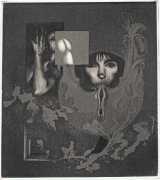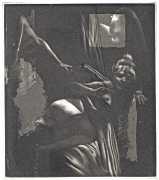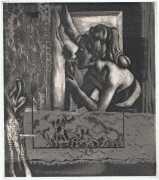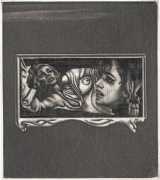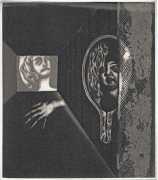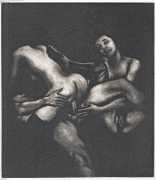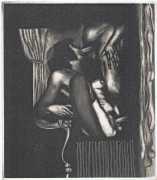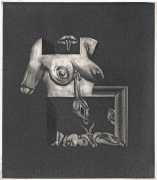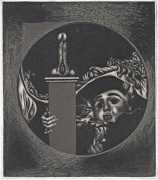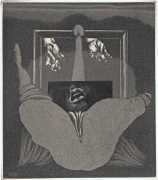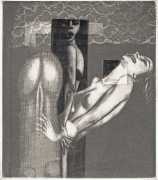
La philosophie dans le boudoir (Philosophy in the Bedroom, or Philosophie im Boudoir in German) is a 1795 book by the infamous and prolific Marquis de Sade written in the form of a dramatic dialogue. Though initially considered a work of pornography, it has come to be considered as much a socio-political work as a sexual one. Set in a bedroom, the characters make the argument that the only moral system that reinforces the political revolution is libertinism, and that if people fail to adopt a libertine philosophy then democracy is doomed to failure.
Eugénie is a fifteen-year-old girl who at the beginning of the drama is a virgin, naïve about all things sexual, who has been brought up by her provincial, self-righteous mother, Madame de Mistival, to be well-mannered, modest, decent and obedient. Madame de Saint-Ange is a libertine young woman, the owner of the house and bedroom in which the dialogue is set. She invites Eugénie for a two-day course on becoming a libertine. Dolmancé is an older man, atheist and bisexual (though with a strong preference for men), and good friend of Madame de Saint-Ange’s younger brother, Le Chevalier de Mirvel. Together Dolmancé and de Mirvel take on Eugénie’s ‘education’. Augustin, Madame de Saint-Ange’s young gardener, is summoned to assist in advanced sexual activities.
Eberhard Schlotter’s dark interpretation of Sade’s dark tale explores a monochromatic multi-layered style of engraving which he was exploring during the late 1960s, so Philosophie im Boudoir was the perfect inspirational text. The characters, often shown only by their sexual elements, appear as shadowy ghosts in an angular architecture; little is stated explicitly but much is suggested.
Schlotter’s Philosophie im Boudoir portfolio was published by Edition Kress, Munich, in a limited numbered edition of 100 copies.
We are very grateful to Hans-Jürgen Döpp for these images; Hans-Jürgen, the compiler of many books on erotic art, curates the Venusberg online gallery and bookshop which you can find here.


